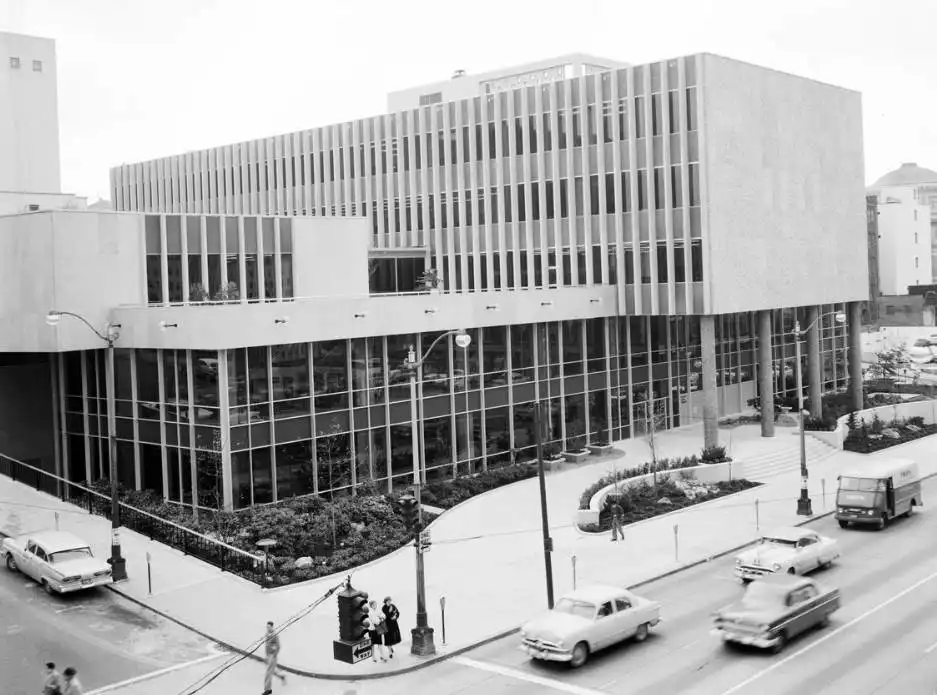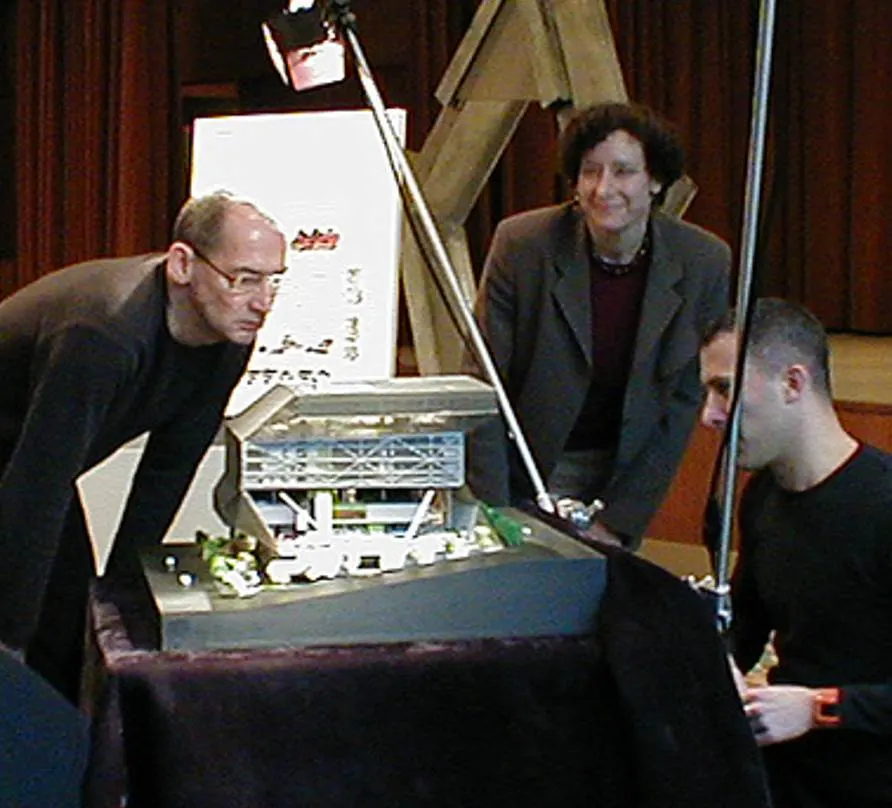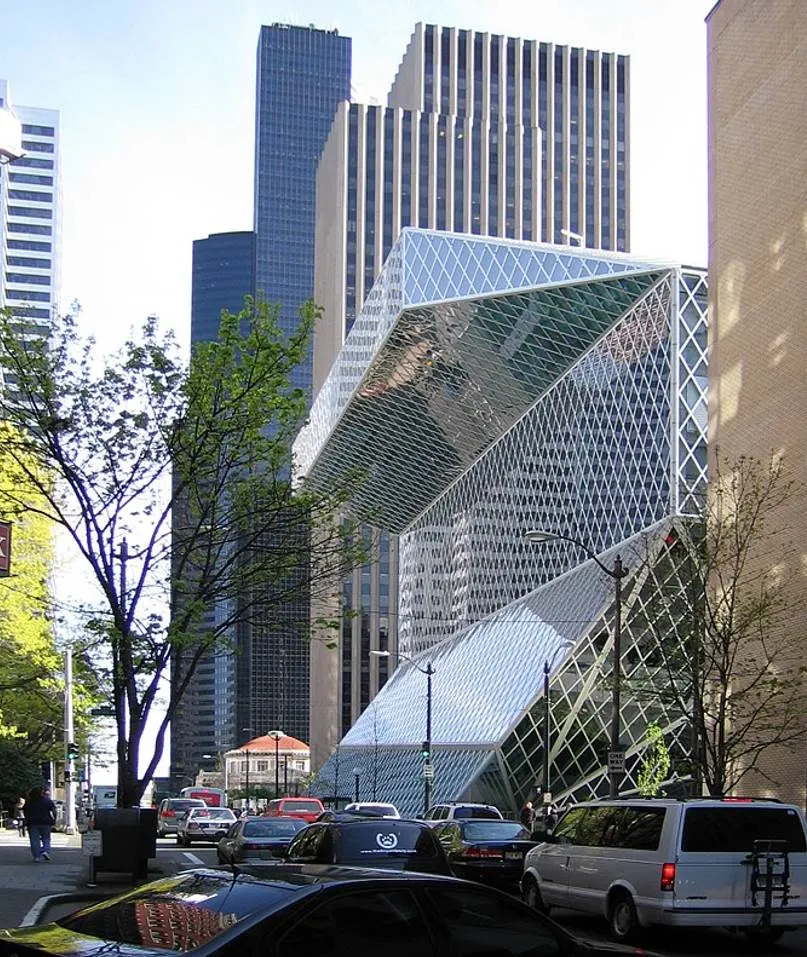When you walk around downtown Seattle, you’ll discover one of the most stunning glass and steel library buildings in the world.
This famous Deconstructivist building was preceded by several other buildings that served as the main public library in the city.
Let’s take a closer look at some of the most interesting facts about the Seattle Central Library, one of Seattle’s most enthralling landmarks.
1. It takes up an entire block in the heart of downtown Seattle
The Seattle Central Library is the main library building of the Seattle Public Library system which features 27 different branches in the Seattle metropolitan area.
It’s located in the heart of downtown Seattle and takes up an entire city block. It’s far from being the tallest building in the area but definitely makes an imposing impression when you see it.
The library is located at 1000 Fourth Avenue and is surrounded by amazing skyscrapers.
The Sky View Observatory of the Columbia Center is located just southeast of the building and the Seattle Art Museum is just a few blocks to the northwest.

2. The first building that was used as a public library opened its doors in 1894
The first public library in Seattle was established in 1891 after years of debates and proposals. It didn’t have a permanent building yet and was housed in several structures in the city.
The most notable home of the newly established library was the Collins Building on the corner of Second Avenue and James Street.

This building was constructed in the Richardsonian Romanesque style between 1893 and 1894 and still stands in this location today.
This building was named after John Collins (1835-1903), an American businessman whose residence once occupied this plot. His house was destroyed by the Great Seattle Fire in 1889.

3. The second library building was built using a donation from Andrew Carnegie
The first permanent building for the Seattle Central Library was constructed in 1906. Steel tycoon Andrew Carnegie (1835-1919) donated $200,000 for this purpose.
What’s remarkable is that Carnegie, one of the richest men in the world, also donated money to build 5 other libraries in Seattle.
This Beaux-Arts building had a floor area of 5,500 square meters (55,000 square feet) upon completion and was extended once in 1946.

4. The third library building was quite big and opened its doors in 1960
The population of Seattle boomed during the first half of the 20th century and this meant that Carnegie’s library became too small and outdated by the 1950s.
This International-Style building featured 5 stories and was completed in 1960. Remarkably, it already occupied an entire city block.
The floor space of the library nearly quadrupled when this building opened its doors as it featured 19,100 square meters (206,000 square feet).

5. The current Seattle Central Library was designed by a renowned Dutch architect
The second permanent building was quite big but had some serious inherent flaws. Not only did it become too small once again but it was also not considered to be earthquake-proof.
Two-thirds of the materials had to be kept in storage by the 1990s so plans to build a new library once again were made.
Dutch architect Rem Koolhaas and American architect Joshua Prince-Ramus collaborated with the local firm LMN Architects to come up with a suiting design.
The general idea behind the was for it to become a “Celebration of Books in the emerging digital era.”

6. The building was completed in 2004 and features some amazing stats
The building has a fascinating design on the exterior but this isn’t reflected on the inside. The idea behind the concept was to make it as inviting as possible.
These are some of the most fascinating stats about the Seattle Central Library building:
- The building has 11 floors.
- The roof is 56.9 meters (185 feet) above the ground below.
- The floor space is 33,700 square meters (362,987 square feet).
- The capacity increased from 900,000 to 1.5 million books.
- There are over 400 public computers.
- Total price tag: $165.9 million.

7. The Books Spiral allows you to discover 4 floors of books without using stairs
The building’s interior was designed in such a way as to make it easy to access all areas. This is emphasized by the so-called “Books Spiral.”
This section features the library’s non-fiction book collection and spirals upward through 4 floors of shelves without the need for visitors to take stairs.
Other remarkable features inside the library include:
- The Microsoft Auditorium on the ground floor – Bill Gates’ reward for donating $20 million to the project.
- The Living Room – A large reading area on the third floor.
- The Charles Simonyi Mixing Chamber – The place where visitors can conduct research.
- The Betty Jane Narver Reading Room – A reading area on the 10th floor that provides stunning views of Elliot Bay.

8. Not everybody has been impressed with the library’s design and functionality
The building’s design has generally been praised, something emphasized by the fact that it made the American Institute of Architects’ list of 150 favorite structures in the country (it ended 108 in 2007).
The library did, however, receive a dose of criticism as well, especially about its functionality.
The Project for Public Spaces detested the fact that the building isn’t accessible from many of the streets and sidewalks that surround it. They stated that:

If the library were a true ‘community hub,’ its most active areas would connect directly to the street, spinning off activity in every direction. That is where Koolhaas’s library, sealed away from the sidewalks and streets around it, fails completely.
Another critic went a step further and called it “confusing, impersonal, uncomfortable, oppressive, on the whole, with various features, decidedly unpleasant, and relentlessly monotonous.”
Regardless of these criticisms, the building is very popular and in my opinion, one of the most stunning landmarks in this part of the city

